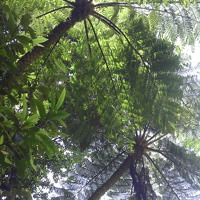—after John Ashbery
Things are
rough, I know, I said taking you out
had no
strings attached, but it’s not often I see you
and wasn’t
it you who whispered a smile
is a precious
thing to waste?
So here the modus
operandi greets us in a row
as you say it
should, though not your cup of tea nor mine,
a
punishment, like Greyhound (for lack of trains)
all part of your
rollover-to-live-to-see-another-day plan
gone on
umpteen years. I guess it might seem better
as the world
closes in, stiffens, and at least
you dropped
in from the sixth
and I borrowed
your light nine to sink a birdie.
Who said I
raised my voice? Sheesh, it wasn’t even your turn
just a penny
opera, no mute scream could
breakdown
the onslaught of Mack the Knife.
All in good
fun even you say
like daffy-go-Bucky
all top-down, robes flowing open
quite the monsieur de la maison, newspaper ruffled
and plop, a robin
dives outside and audiences pirouette
on their bums
to hear the upshot, pas du tout.
Double sheesh.
So tell
yourself we’re on the up and up
and the hologlobe
spinning under our fingers will come around
to a lost
island in the Pacific slowly sinking,
but no need
to send in the llamas—
we’ve seen
what that does. Try steering clear
of what
makes you unhappy without letting it down.
See you when
flights resume.
(Nov. 10, 2014)













